The Everest Expedition is one of the most popular climbing expeditions in the world. Standing impressively tall at 8,848 meters above sea level, Mt. Everest ultimately draws the attention of seasoned climbers.
Overview:
Climbing the highest mountain in the world is a dream of all mountaineering enthusiasts. Standing impressively tall at 8,848 metres above sea level, Mt. Everest Nepal ultimately draws the attention of seasoned climbers. The Everest Expedition is one of the most popular climbing expeditions in the world.
After Sir Edmund Hillary and Tenzing Norgay Sherpa summited Everest for the first time in 1953, the mountain has seen numerous successful climbs ever since. The dream mountain expedition, climbing Everest, takes around two months to complete. The expedition is challenging and skill-demanding. But your willpower gets over everything that comes along.
The Mt Everest climbing adventure includes a trek to Everest Base Camp and the ascent of the mountain. As soon as Everest trekking begins on the trail towards the base camp, you can enjoy the serene and magnificent beauty of the mountain surroundings.
The months between March to May during spring and September to December during autumn are the ideal months for the Expedition. You can enjoy the best Everest base camp expedition weather during these times of the year.
With several days of acclimatizing at the base camp, the expedition takes you higher up in the mountain. You will have acclimatization days on the peaks once you begin the Mount Everest expedition ascent. Four different camps in the mountains offer you camping accommodation while you are in the mountains. You attempt to summit the peak from Camp IV.
Difficulty in Climb Everest
Climbing Mount Everest is one of the most formidable challenges in the world of mountaineering. The primary Everest expedition Difficulty include:
- Altitude: The extreme Everest altitude means that climbers are exposed to deficient oxygen levels, especially above 8,000 meters (26,247 feet), known as the "Death Zone." In this zone, the body cannot acclimatize and starts to deteriorate due to the lack of oxygen.
- Weather: Harsh and unpredictable Everest weather conditions, including high winds, snowstorms, and extreme cold, can make climbing treacherous. Temperatures can drop to -40 degrees Celsius (-40 degrees Fahrenheit).
- Physical Endurance: Climbing Everest requires exceptional physical fitness and stamina. The trek to the Everest summit involves climbing for several hours each day under strenuous conditions.
- Technical Challenges: Climbers must navigate through dangerous sections like the Khumbu Icefall, a constantly moving glacier with deep crevasses and towering ice seracs, and the Hillary Step, a nearly vertical rock face near the summit.
- Health Risks: Risks include altitude sickness, frostbite, and hypothermia. Acute Mountain Sickness (AMS), High Altitude Pulmonary Edema (HAPE), and High Altitude Cerebral Edema (HACE) are serious conditions that can be fatal if not treated promptly.
- Logistical Challenges: Organizing a climb involves complex mt. Everest expedition 2024 logistics, including securing permits, arranging guides and Sherpas, and ensuring sufficient supplies and equipment.
When is the Best Time to Climb Mount Everest?
The optimal time to climb Everest is during the pre and post-monsoon (Everest spring expedition) seasons. Preferable Everest climbing Seasons include:
- Pre-Monsoon Season (Late April to Early June): This is the most popular time to climb Everest. The Mt. Everest expedition weather is relatively stable, and temperatures are warmer compared to autumn. The jet stream moves away from the summit, reducing wind speeds, which makes climbing conditions more favorable.
- Post-Monsoon Season (September to November): This season offers clear skies and good visibility, but it is generally colder and less predictable than the spring season. Fewer climbers attempt the Everest summit during this time, which can offer a quieter Everest climbing experience on the mountain.
How Long Does It Take to Climb Everest?
The entire expedition to climb Mount Everest typically takes about two months. The timeline includes:
- Trekking to Base Camp: The journey begins with a trek from Lukla to Everest Base Camp, which takes about 8-10 days. This Everest trek allows climbers to acclimatize to the increasing altitude gradually.
- Acclimatization: Once at Base Camp (5,364 meters / 17,598 feet), climbers spend several weeks acclimatizing. This involves climbing to higher camps and then returning to Base Camp to rest. This process is crucial to reduce the risk of altitude sickness.
- Climbing to Higher Camps: After acclimatization, climbers move to higher camps (Camp I, II, III, and IV) over several days, setting up intermediate camps and carrying supplies.
- Summit Push: The final push to the Everest summit from Camp IV (South Col, 7,920 meters / 25,984 feet) usually takes place in a single long day. Climbers start the Everest ascent around midnight to reach the summit and return to Camp IV before the afternoon when weather conditions can deteriorate rapidly.
Preparation for an Everest Climb
Preparation for climbing Everest is extensive and includes:
- Physical Training: Climbers need to be in top physical condition. Training should include cardiovascular exercises, strength training, and endurance activities such as long hikes carrying heavy packs.
- Acclimatization Climbs: Prior high-altitude climbing experience is essential. Climbers often practice on smaller peaks like Island Peak, Mera Peak, or Aconcagua to prepare their bodies for the highest altitude.
- Mental Preparation: Mental resilience is crucial for enduring the harsh conditions and long duration of the expedition. Climbers should be prepared for the psychological challenges of isolation, fear, and fatigue.
- Technical Skills: Proficiency in using climbing equipment like crampons, ice axes, and harnesses is necessary. Climbers should also be comfortable with roped travel and crevasse rescue techniques.
- Logistics: Organizing an expedition includes securing permits, arranging guides and porters, planning for food and medical supplies, and ensuring all gear and equipment are in excellent condition.
Short History of Mountaineering Expedition to Mt. Everest
Mount Everest, known as Sagarmatha in Nepal and Chomolungma in Tibet, has a rich history of exploration:
- 1920s: The first attempts to climb Everest began in the 1920s by British expeditions. George Mallory and Andrew Irvine famously disappeared near the summit in 1924, and it remains a mystery whether they reached the top.
- 1953: Sir Edmund Hillary of New Zealand and Tenzing Norgay, a Sherpa of Nepal, made the first confirmed Everest ascent on May 29, 1953.
- 1963: The first American ascent was achieved by Jim Whittaker. That same year, Tom Hornbein and Willi Unsoeld made the first traverse of Everest, ascending via the West Ridge and descending via the South Col.
- 1975: Junko Tabei from Japan became the first woman to reach the summit.
- 1980: Reinhold Messner completed the first solo Everest ascent without supplemental oxygen.
- 1996: The deadliest day on Everest region expedition 1996 occurred on May 10, 1996, when eight climbers died in a severe storm. This disaster was famously documented in Jon Krakauer's book "Into Thin Air."
Mount Everest Expedition Cost
The Everest Himal Expedition cost can range from $30,000 to over $100,000, depending on the level of service and support. Key expenses include:
- Permits: Everest climbing permit from the Nepalese government costs around $11,000 per person for the spring season. Additional permits are required for the Sagarmatha National Park and the Khumbu Pasang Lhamu Rural Municipality.
- Logistics: Costs for transportation, accommodation, and food during the trek to Base Camp and while on the mountain.
- Guides and Sherpas: Hiring experienced Everest Expedition guides and Sherpas can significantly increase the cost but is essential for safety and support.
- Equipment: High-quality climbing gear, including clothing, boots, oxygen systems, tents, and technical equipment.
- Insurance: Comprehensive travel and medical insurance, including evacuation coverage, is necessary.
Mount Everest Base Camp
Mt. Everest Base Camp (EBC) is the starting point for climbers attempting to summit Everest. It is located at an altitude of 5,364 meters (17,598 feet) on the Khumbu Glacier. EBC provides:
- Infrastructure: Temporary camps with tents, communication systems, and basic facilities.
- Support: Medical support, Everest weather updates, and logistical coordination for climbers.
- Community: A vibrant community of climbers, guides, and support staff, fostering camaraderie and mutual support.
Everest Climbing Permit
Climbers need several permits for the Mt Everest climb. The permit cost varies as per the Everest Climbing Seasons.
- Everest Climbing Permit: Issued by the Nepalese government, costing around $11,000 per person for the spring season.
- Sagarmatha National Park Permit: Required for trekking in the national park, costing around $30.
- Khumbu Pasang Lhamu Rural Municipality Permit: An additional local permit costing around $20.
Everest Climbing Route
There are two main Everest climbing routes for the summit:
- Everest South Col Route (Nepal): The most popular route, involving the Khumbu Icefall, Western Cwm, Lhotse Face, South Col, and the Southeast Ridge to the summit.
- Everest North Col Route (Tibet): A challenging route with fewer climbers, involving the East Rongbuk Glacier, North Col, and the North Ridge to the summit.
Mount Everest Summit Success Rate
The Everest summit success rate varies but averages around 29%. Factors influencing success include:
- Weather: Favorable conditions are crucial for a successful summit.
- Experience: Climbers with prior high-altitude experience have higher success rates.
- Everest Expedition Preparation: Proper acclimatization, physical fitness, and logistical planning improve chances of success.
Everest South Col Route
The Everest South Col route is the most popular and includes:
- Khumbu Icefall: A dangerous section with moving ice and crevasses.
- Western Cwm: A flat, glacial valley leading to Camp II.
- Lhotse Face: A steep wall of ice leading to Camp III.
- South Col: The final camp before the summit push.
- Southeast Ridge: The final Everest ascent, including the Hillary Step and the South Summit.
Everest North Col Route
The Everest North Col route from Tibet is less crowded and involves:
- East Rongbuk Glacier: The approach to the North Col.
- North Col: The first major camp on the route.
- North Ridge: A steep and exposed ridge leading to the summit.
- Second Step: A technical rock face near the summit that requires fixed ropes and ladders.
Reasons for Mt. Everest Expedition Becomes an Experience
Nepal Climbing Adventure always strives to offer an adventure traveling experience that can be cherished. While the Expedition is beautiful, your Everest expedition experience becomes even more beautiful with us.
While we take you to the base camp and bring you back, we take one step ahead to offer you a beautiful Everest Climbing experience. We keep your Everest Expedition safety and happiness our top priority and you will experience the same during the trip.
Going on the Mount Everest Expedition with us is traveling in safe hands.
Gear and Equipment Needed During Mt. Everest Expedition 2024-2025
Essential Everest Climbing Gear includes:
- Clothing: Layered clothing for extreme cold, including base layers, insulating layers, and outer shells. Specialized high-altitude boots, gloves, and headgear.
- Technical Equipment: Crampons, ice axes, harnesses, ropes, carabiners, and ascenders.
- Oxygen Systems: Bottled oxygen and regulators for use above 7,000 metres.
- Tents and Sleeping Bags: High-quality, weather-resistant tents and sleeping bags rated for extreme cold.
- Food and Supplies: High-energy food, cooking equipment, and hydration systems.
Detailed Everest Expedition Itinerary:
Day 01: Arrival at Kathmandu
Upon arrival in Kathmandu, a designated individual will greet you at Tribhuvan International Airport. Then you will be transferred to your hotel where you will spend the night.
- Accommodation: Hotel
Day 02 - 03: Preparation & Day Sightseeing
Today we spent our day sightseeing in Kathmandu. Most sightseeing includes UNESCO World Heritage Sites such as Kathmandu Durbar Square, Swayambhunath Temple, Pashupatinath Temple, etc. Back at the hotel, you will be briefed on the set Everest expedition itinerary to make necessary trip preparations and paperwork.
- Accommodation: Hotel
- Meal: Breakfast
Day 04: Fly to Lukla & Trek to Phakding
We take an early morning short flight to Lukla. The 30-minute flight involves a scenic view over the exquisite hilly region of Nepal. Upon arrival at Lukla, we met our porters and Everest Expedition guides. After making the necessary arrangements we trek through the village of Lukla till we reach Phakding. The trek includes many lodges where we can stay overnight.
- Accommodation: Guesthouse
- Meal: Breakfast, Lunch and Dinner
Day 05: Trek to Namche Bazaar
The trek begins along the banks of Dudh Koshi River and across it twice via small suspension bridges to reach Monjo village. From here we cross the Dudh Koshi and Bhote Koshi rivers by a suspension bridge and climb up the trail to Namche Bazaar.
- Accommodation: Guesthouse
- Meal: Breakfast, Lunch and Dinner
Day 06: Acclimatisation Day
Today will be Acclimatization Day in Namche Bazaar. We accustom ourselves to the cold weather and the altitude. In the morning after breakfast, we visit the Sherpa Museum. We will also visit local shops for necessary equipment and clothing. In the afternoon we visited villages near Namche Bazaar. We return to the lodge and spend the night.
- Accommodation: Guesthouse
- Meal: Breakfast, Lunch and Dinner
Day 07: Trek to Tengboche
We continued our Everest expedition Nepal trek out of the village early in the morning. The trail provides excellent panoramic views of Everest, Nuptse, and Lhotse peaks. The steep trail ascends uphill and follows the yak trails towards Tengboche Monastery. We spent the night in a lodge near the monastery.
- Accommodation: Guesthouse
- Meal: Breakfast, Lunch and Dinner
Day 08: Trek to Dingboche
The trail passes through several villages filled with Mani walls leading to a Rhododendron forest. The path goes across the Imja Khola River through a suspension bridge. Pangboche village known for its view of Ama Dablam is another hour's walk from here. After lunch, we hike to Pangboche monastery and follow through summer pastures to Dingboche. We spent the night in a local lodge.
- Accommodation: Guesthouse
- Meal: Breakfast, Lunch and Dinner
Day 09: Acclimatisation
It is acclimatization in Dingboche. It involves gradual exposure to the high-altitude environment by walking to nearby hills.
- Accommodation: Guesthouse
- Meal: Breakfast, Lunch and Dinner
Day 10: Trek to Lobuche
We ascend the trail to reach Dugla situated just below the Khumbu Glacier. After lunch, we continued along the trail of Khumbu Glacier to reach Lobuche. We spent the night at a local lodge.
Day 11: Trek to Everest Base Camp
The trek is followed by a trail to a sandy flat at Gorak Shep overlooking Khumbu Glacier. From Gorak Shep, the trail leads to the moraine of the Khumbu Glacier which eventually reaches the Everest Base Camp expedition near the foot of the Khumbu Icefall.
- Accommodation: Camping
- Meal: Breakfast, Lunch and Dinner
Day 12 - 14: Rest and Everest climbing Expedition preparation
We perform our pre-climb training in Base camp. We learn about climbing techniques and familiarize ourselves with the Everest Climbing gears and equipment required for our Everest ascent. We acclimatize ourselves further by trekking near the base camp.
- Accommodation: Camping
- Meal: Breakfast, Lunch and Dinner
Day 15 - 58: Summit Period: Established Camps, Rest, Acclimatise, and Summit Mt Everest Ascent
We start early in the morning for the summit to avoid strong afternoon winds. The climb is coordinated and guided by expert climbers. The Sherpas assist us with carrying our Everest Climbing gear. The ascent rewards us with spectacular views of the Himalayas. Four camps will be set up on the way upwards.
Camp 1: 6400m (20,996ft)
Camp 1 is arranged on the horizontal level of profound snow shielded by mountain walls. The range is warm because of the sun during the day, and during the night the strong blow of air and cracking sound underneath the tents can be heard.
Camp 2: 6750m (22,145ft)
Camp 2 is set at the foot of the Lhotse wall. Cloudy but lovely weather is expected.
Camp 3: 7100m (23,292ft)
Camp 3, adjoining the Lhotse divider, is achieved with the help of a fixed rope. The way takes us through the precarious Yellow Band. The course takes us up the Geneva Spur toward the east before going to the South Col. Past Camp 3, a few climbers may feel minor inconvenience because of the height, and the Everest Oxygen Usage might be fundamental.
Camp 4: 8400m (27,560ft)
This is the last camp before the Everest summit and the most dangerous segment of the climb, only 450 meters from the summit. The narrow southeast edge is taken to achieve the south summits (8,750m), and from here it is anything but difficult to reach Everest's summit at 8,848 meters.
- Accommodation: Camping
- Meal: Breakfast, Lunch and Dinner
Day 59: Return to Base Camp
After much-deserved quality time at the Everest summit, we carefully descend along the same Everest climbing route. We then return to the base camp, set up our camp, and rejoice in enjoyment.
- Accommodation: Camping
- Meal: Breakfast, Lunch and Dinner
Day 60-61: Return to Namche Bazaar
The return trek back to Namche Bazaar via the same Everest climbing route of Dingboche and Tengboche. The trail follows through pine forests with mesmerizing views of the Himalayan massifs. The Everest trek continues as we cross the Dudh Koshi River and descend to Sansa to reach Namche Bazaar where we spend overnight at a local lodge.
- Accommodation: Guesthouse
- Meal: Breakfast, Lunch and Dinner
Day 62: Trek to Lukla
After breakfast, we descended downhill following Hillary suspension bridges across the Dudh Koshi River and through local Sherpa villages. In the evening we reached Lukla where we spent the night.
- Accommodation: Guesthouse
- Meal: Breakfast, Lunch and Dinner
Day 63: Flight back to Kathmandu
From the Lukla airstrip, we head back to Kathmandu. Once in Kathmandu, we head back straight to the hotel. We celebrate our accomplishments during dinner and pamper ourselves with much-needed rest.
- Accommodation: Hotel
- Meal: Breakfast
Day 64: Rest at Kathmandu & Debriefing
Today, you will be visiting the Department Of Tourism for a debriefing of the Everest expedition and receiving the certificate of accomplishment.
- Accommodation: Hotel
- Meal: Breakfast
Day 65: Departure
On this day you are free to do as you please. A designated individual will drop you at Tribhuvan International Airport as per your flight schedule. Farewell.
- Meal: Breakfast
What is included?
- All types of organizational requirements
- All the trekking and climbing paper works and permits
- All airport and hotel transfers
- Welcome and farewell dinner
- Flight to Lukla and back
- Accommodation and meals during the whole of the expedition
- Government and local taxes
- Reference notes to plan your trip
- An experienced English-speaking climbing guide, assistant climbing guide, and Sherpa porter including their salary, insurance, food, lodging, and all equipment
- A comprehensive medical kit
- Facilities of Email and satellite phones in base camp
- Necessary Everest Oxygen Usage bottles
- Written and photo internet dispatches to send your progress to your family
What is not included?
- Nepal Visa fee(bring small denomination cash USD and two passport photographs)
- International airfare
- Excess baggage charges
- Extra night accommodation apart from the schedule due to any reasons
- Travel and rescue insurance
- Charges for Email and satellite phones
- Charge for extra Sherpa porter (if required)
- Personal expenses
- Tips for Climbing Guide and Sherpa
- Lunch and evening meals in case of early return than the scheduled Everest expedition itinerary
There are a number of things that you need to keep in mind if you ever plan for your vacation. Because you want to make the most out of your limited time, it is truly a hectic job for you to find a trustworthy and experienced traveling companion. With Nepal Climbing, you have your problem solved already as we are one of the leading Trekking and Mountaineering organizations in Nepal and have been providing first class service in several travelling packages across the country for many years.
We prioritize your satisfaction and safety
At Nepal Climbing Adventure, our ultimate objective is to arrange the programs for you to make the most out of your valuable time. We value your satisfaction, adventure, amusement and safety. Regardless of whether you are searching for stunning perspectives along the trekking trails in Himalayan mountain range or widely acclaimed, heavenly attractions with developed societies, our exposure and experience in travel business will help you ensure your requirements are met.
We have professional staffs and service
We trust that extraordinary staff lead awesome administration. That is the reason we are collaborated with experienced and eager individuals. We possess authorized and government certified guides who are very much furnished with broad learning of Nepali communities and traditions. They additionally have familiar English speaking abilities and hierarchical capacities to encourage all types trekking groups.
Responsible Tourism and social values
We are endeavoring to lessen the effect of tourism by guaranteeing our staff are very much aware of ecological issues. We are doing our best to create less waste as could be expected under the circumstances and make a point to reclaim non-compostable wastes. We outline our itineraries and work in the field guided by the standards of ecotourism and reasonable tourism. Moreover, all our staff have been given ecological preparing and are extremely aware to the eco-system we enter. Additionally, we are adhering to sustainable assets of energy. Our guides will share you the social values, culture and religious harmony for better understanding the groups you visit.
Customizable Service
Our promise is to provide you with the travelling packages customizable according to your demand fulfilling your budget criteria. So, we can facilitate a minimum of 2 individuals with a personalized service at a reasonable cost.
Online Payment
Or
WIRE TRANSFER
Bank Details:
Account Holder's Name: Nepal Climbing Adventure Pvt. Ltd.
Bank Name: Himalayan Bank Ltd.
Account Number: 01907449340018
Account Type: USD
Address: Thamel, Kathmandu, Nepal
SWIFT CODE: HIMANPKA
For more detail contact us:
Krishna Subedi (Chris Chhetri): +977 9851076791 (24/7, Call/Viber/Watsapp)
We recommend our guests have a valid insurance policy before undertaking an adventure in Nepal Himalaya. During treks and expeditions, the insurance should cover for expenses such as air ambulance, helicopter rescue, and medical care. As an adventure operator, we (NCA), are not permitted to arrange or sell insurance packages here in Nepal as per the Government of Nepal.
Are you a licensed trekking agency?
Yes, we are a licensed company to operate adventure tours in Nepal. We have been organizing tours, Treks, and Expeditions for our valued clients for over two decades. Our long journey and experience in the field have made us pioneer in the industry.
Frequently Asked Questions (FAQs):
1. Are you a licensed adventure company?
Yes, we are a licensed company to operate adventure tours in Nepal. We have been organizing tours, Treks, and Expeditions for our valued clients for over two decades. Our long journey and experience in the field have made us pioneers in the industry.
2. Do the guides speak English and have first aid training?
All of our guides are experienced experts in their job and speak fluent English. Most of them are born in the areas they guide trekkers to and have several years of experience as trekking guides in the mountains. It's mandatory that they are trained in first aid and also carry a first aid kit with them during the trek.
3. How big are the groups?
We always do our best to team up a small group of like-minded people to give them a memorable and insightful adventure travel experience, coupled with an invaluable opportunity to interact with each other in the true spirit that comes with adventure. Our trek groups generally comprise of maximum 12 members. We need a minimum of 2 participants to run our fixed departure dates. For private trips, no minimum or maximum numbers apply.
4. Are permits included in the price of the adventure?
Yes. All of the necessary permits for your trekking, climbing, and expedition are included in the price and will be arranged for you prior to your trek. For certain restricted regions (like Manaslu and Makalu), you'll need to have a full day in Kathmandu prior to your trek as your trek operator will need your passport for the permit registration.
5. Do you arrange private adventures?
Yes, we do. If you would like to travel independently, or with your friends, families & colleagues you are invited to choose any of the trips at a time frame that best suits you for any number of people (minimum 1 & maximum 100 at a time). The costs for private trips are generally fixed on the basis of group size, trek area, duration, and trek style, and is negotiable. We also arrange TREKS FOR A SINGLE WOMAN. If by any chance, none of our fixed group departure dates work for you and you do not have anyone to accompany you, you can still be able to make your preferred trip with us. There is absolutely nothing to worry about if you want to go solo. We assign local guides, porters, etc who you can trust your life with.
6. Do you provide any equipment while trekking?
On all our Camping treks, we provide all the tents, sometimes dome tents, sometimes sturdy A-frames, and normally people share one tent between two; a foam mattress each; all the cutlery and utensils, cooking pots, stoves; candles/kerosene lantern, tables, and stools, kitchen tent, dining tent and toilet tent; all the main meals while trekking but not snacks. On Tea house treks there isn’t really a necessity to provide any equipment.
But you are provided a duffel bag if you don’t have one and a down jacket if you haven’t flown in with your own. This is loaned to you and must be returned when the trek is done.
7. How difficult are the treks?
Classifying the difficulty of a trek is like walking a thin red-line, as it depends on your fitness and experience hiking in the mountains. In the Himalayas, a trek's difficulty depends on the steepness of the trail, the general altitude, and the duration of the trek. Generally, the higher you go the more difficult the trek becomes. For most treks in the lower foothills (Ghorepani, Poonhill, Ghandruk, and Pikey Peak), it's fairly moderate trekking, although some days will be more challenging than others. For higher-altitude treks (i.e. Everest Base Camp, Gokyo, Annapurna Circuit, and Nar Phu), the treks become more challenging as you get going over 5,000m passes with longer days. If you’re an avid walker and enjoy hiking, then there’s no better adventure than trekking.
8. How long do we walk each day?
Much of our trekking ventures are classified into THREE different categories according to the level of difficulty. Soft Adventure treks are only about a week to 10 days in duration. They generally don't go above 4000 meters and each day, you can expect to be walking for around 4 – 5 hours. While moderate to fairly challenging treks are longer treks that go right into high mountain country. Physically quite tiring, these involve approx 6-8 hours trekking along rocky ridges of high Himalayan peaks. Arduous treks are longer treks that go far beyond the normal haunts of trekkers and tourists. Physically challenging, these may involve 7-9 hours trekking and likely to include unfavorable weather conditions and activities that are not only physically challenging but also tax the mind. These trips are not for greenhorns.
9. What is exactly 'teahouse' trekking?
Teahouse trekking refers to staying at a small local lodge or mountain hut each night of your trek. The lodges are basic but pretty cozy; enough to shelter you from the bitter mountain winds. They consist of 5-10 rooms with a common area used for eating and hanging out. Most treks in Nepal are teahouse treks where the lodges are run by members of the local community. Bunking out at these teahouses in some of the harshest territories on earth will give you a true sense of what life is in the wild.
10. What do we mean by FOT trek?
On FOT or a ‘Fully Organized Trek’, all meals and sleeping arrangements will be fully organized by the support crew. FOTs are also known as CAMPING TREKS. On camping treks, you will be sleeping in tents. A trekking crew consists of one sirdar, one cook, and kitchen crew, Sherpa assistants, and porters depending on the size of the group. Under the leadership of the Sirdar (local trek leader), the crew consists of several Sherpa assistants who will ensure you don't take the wrong path, a cook and kitchen crew to keep you well-fed with delicious and nutritious meals, and the porters to transport all the gear from camp to camp.
Our main aim is to make the trek as hassle-free and enjoyable as possible. The ratio of both Sherpa guides and kitchen crew to group members is generally 1:4 and the ratio of porters to group members is around 3:1 at the beginning of the trek, but this decreases as food is eaten and loads become smaller. For bathroom facilities, we carry a toilet tent. Your camping staff dig a deep hole in the ground for excrement and cover the hole with soil after nature’s call is done. Camping treks are more expensive than teahouse treks. These treks are generally operated in remote restricted alpine zones that go above the tree-lines. Camping treks can also be used as options for teahouse treks throughout the Himalayas to enjoy the true spirit of adventure!
11. What is security like during trekking?
Security for our clients is always a foremost priority for us. All our guides and other support crew are carefully chosen for your trips. Our guides hold licenses issued by the Nepal Government. They are very honest and reliable. But we would also advise you to take care of your own personal belongings. If you are on ‘camping treks’ please do not leave your bags unattended at any time for your own safety. Take your main bag inside the tent once you reach the campsite. At night, all bags and belongings are kept in the middle of the tent. Your guide assigns a Sherpa on a rotation basis to guard the campsite throughout the night. If you are on a ‘Tea house or GAP trek’ arrangement, you will be sleeping in local teahouses. You need to take sensible precautions yourself at all times. Never leave your baggage unattended and keep your lodge room locked when you go out.
12. What happens if I fall ill during the trek?
If by chance you fall ill during your trek, the first course of action depends on what's wrong with you. If it's altitude sickness, moving to lower altitudes and taking altitude medication will solve most cases; if it's quite severe, your guide will arrange for emergency evacuation by helicopter (be sure that emergency helicopter rescue is covered in your travel insurance). If you have a stomach sickness, bug, or any other types of food or water-related illnesses, your guide will have medication on hand for the most common illnesses.
13. What type of food is served during a trek?
On CAMPING TREKs we provide three delicious, plentiful and nutritious meals daily with a tasty mix of local and western dishes. Your day starts with a king-size breakfast consisting of a choice of porridge, muesli, and cereals followed by omelet, fried, or scrambled eggs with ‘chapatis’ [rounded bread made from wheat] or multigrain-bread. Also included are seasonal fresh fruits. Lunch is generally a selection of organic salad, cooked vegetable dishes, pasta, and traditional bread. Dinner is a truly healthy 3-course meal - soup, followed by a variety of vegetables, meat, and rice and pasta dishes and completed with a simple dessert [which may include a finger-licking crusty apple pie].
Ironically, some of the best apple pies in the country are found on these mountains and not in Thamel, Asia’s hub for backpackers; as many tourists would assume. Tea and coffee are also provided at all meals. We use as much fresh organic produce as possible available at some of the villages we hike through and special diets are regularly catered for. The trek leaders maintain very tight controls on health and hygiene in the kitchen with respect to general cleanliness and food preparation and also within the group with respect to personal hygiene.
All foods are well cooked and vegetables are treated by potassium permanganate or iodine. We only serve Boiled water for drinking. Antiseptic soaps and potassium or iodine treated water are provided for washing. Special dietary requirements can always be catered for. On Tea House treks we provide standard breakfast, lunch, and three-course dinner, tea or coffee is also included with each meal. Your guide will help with menu selection and ensure that you get the best value meals possible. Although the food is usually plentiful and delicious, you should be aware that the menu is not normally extensive. Most teahouses offer a variety of rice and soupy noodle dishes, as well as soup and seasonal vegetables. A variety of cereals, bread, and egg dishes are generally available for breakfast. There will also be plenty of snacks available such as biscuits, chocolate, and soft drinks and in some areas, you will find fresh fruit in season. You can buy packaged water (bottled mineral water) from local lodges and shops en route or you can also ask your guide to fill your water bottle with boiled water and treat it with water purification pills. Although it's held that gluttony is a sin, nevertheless, we ensure our trekking guests are well fed in as much as they can digest to cope with the arduous trails and the tough elevations.
14. Do I need to carry my own gear?
You'll carry your daily essentials (sunblock, water, hat, light jacket, and camera) but your porter will carry the bulk of your gear, such as extra clothing and overnight basics. Porters are especially helpful for longer treks where you'll be carrying more gear. For shorter treks (2-3 days), you may opt just to have a guide if you're comfortable carrying your own gear, but hiring a porter is a great way to support the local economy and is quite affordable. It's also the safest thing to do when you’re hiking on the biggest and most rugged mountains on planet earth.
15. How much could porters carry?
Porters typically carry up to 30 kgs max. (To ensure they're not overloaded). For fragile items, such as cameras, it's still best to carry these items yourself. If you have more than 15 kg., please carry the extra weight in your day pack. In the commercial trade, when transporting goods and supplies up into the high mountains, some porters carry up to 100 kgs and get paid less than a fair wage provided by some so-called responsible trekking companies. However, doing things like this weighs on the conscience and we totally avoid such unfair situations.
We know the risk that comes with neglecting our porters and follow all mandatory guidelines as stipulated by the IPPG international porters association.
16. What is overnight accommodation like?
In cities like Kathmandu or Lhasa, accommodation will be in hotels of your preference. We have a pool of hotels that ranges from luxury deluxe to budget hotels. While on a trek accommodation will depend on the trek style. If you are taking a camping trip then you will be sleeping in tents. Whilst we endeavor to stay in the best possible accommodation along the way, you should be aware that most teahouses, particularly in the smaller villages, are pretty basic but cozy enough to protect you from the harsh elements. The bedrooms are usually very small, the shared bathroom facilities are often outside and meals are served in a communal dining hall. Although simple, the teahouses do provide shelter and warmth and are normally run by friendly local families. Tea house treks are less expensive than Camping treks and are largely suitable for small groups. Usually, during busy seasons if private rooms in smaller villages are fully occupied you might have to bunk out in a dormitory. But then this is what adventure is all about.
17. Can we change the itinerary?
Depending on the prevailing situation, you can modify it to some extent after consulting with your senior guide. However, the date of trek completion should always coincide with the original itinerary. You should keep in mind that this is an adventure trip into some of the most remote regions in the world, where many unforeseen circumstances may contribute to the need for a change in itinerary. In such cases, we or your guide will suggest the best alternative similar to your original itinerary.
18. Is tipping included and if not, how much should I budget?
Tips are always appreciated by your support team after the trip. The amount depends on your budget and appreciation of their work. Guiding on some of the riskiest trails on earth is a tough job and your crew always makes sure they lead from the front. Some trekkers give 10% of the total tour cost as tips. The hat is passed around and the whole group contributes. Most trekkers happily provide tips with big hearts. The choice is yours if you feel they’ve been worth it.
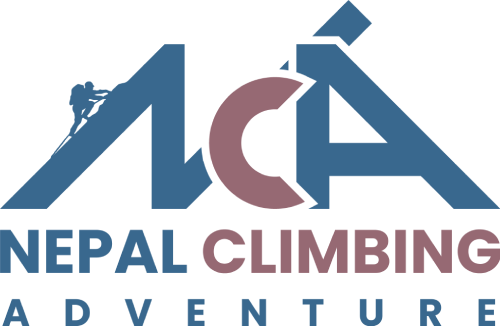
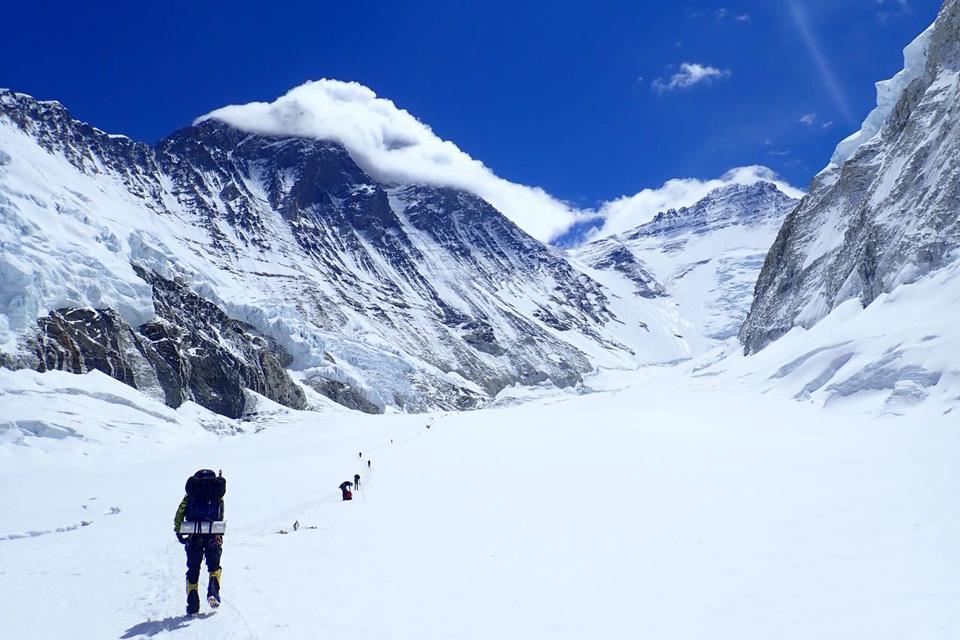
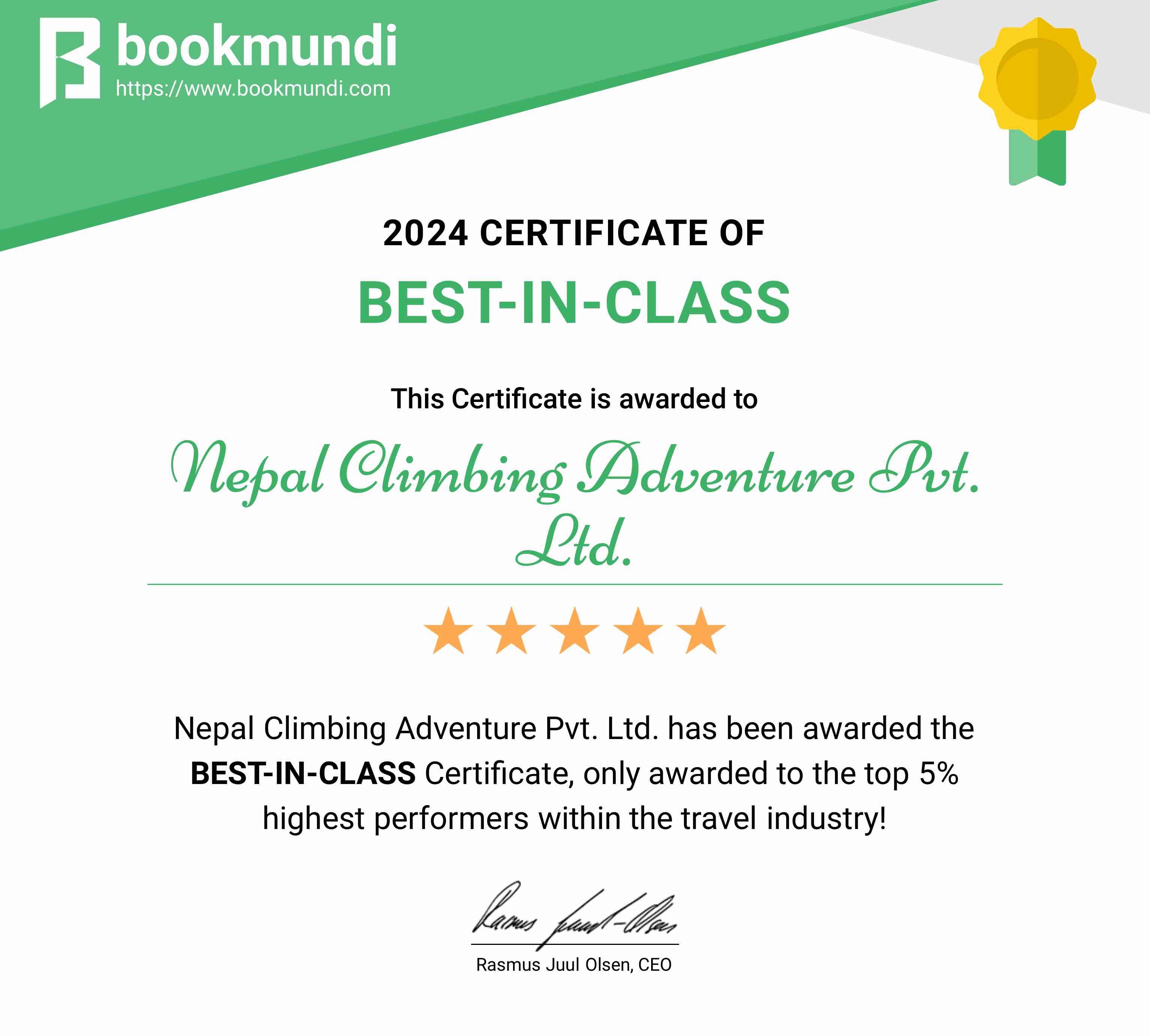
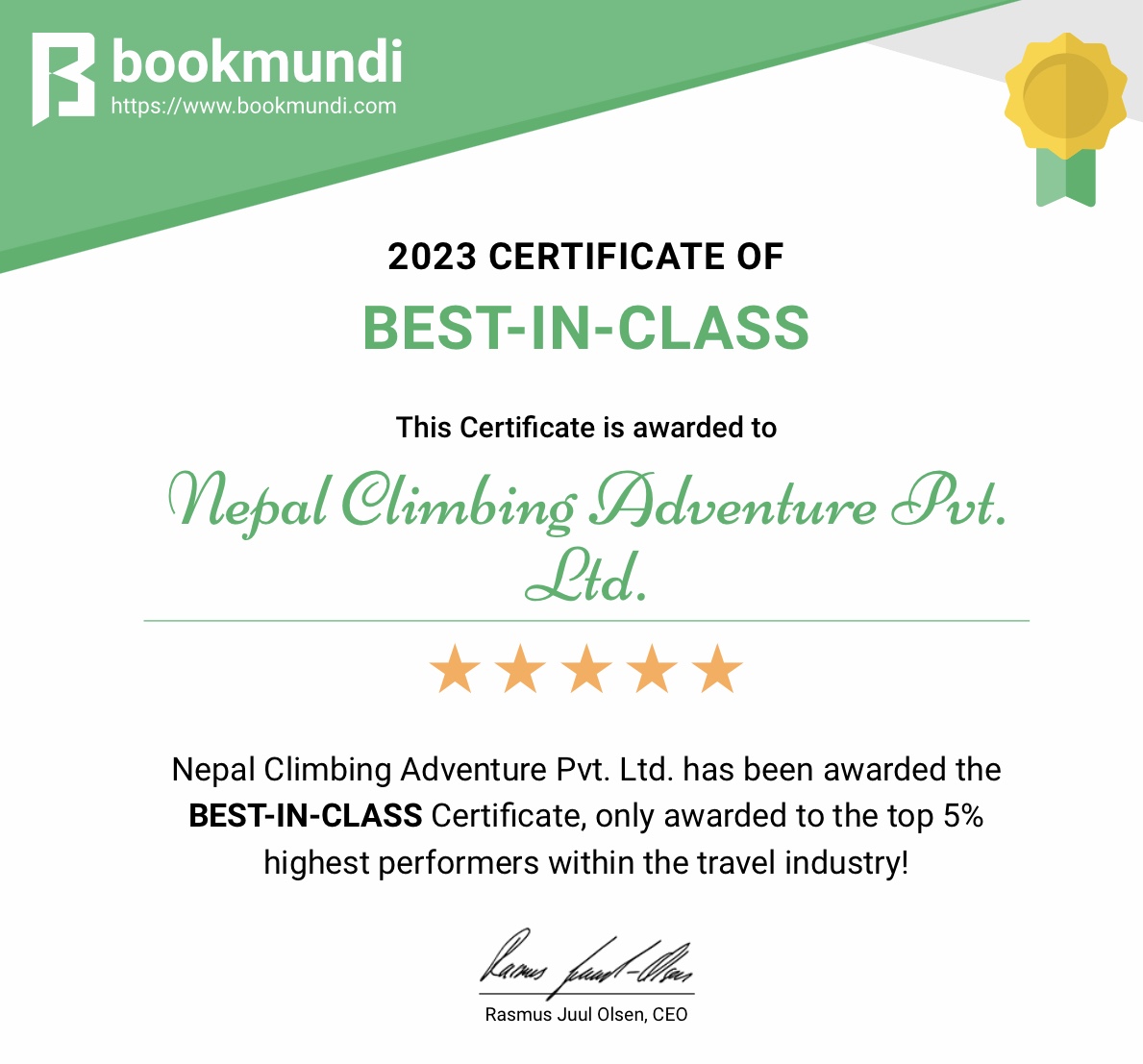
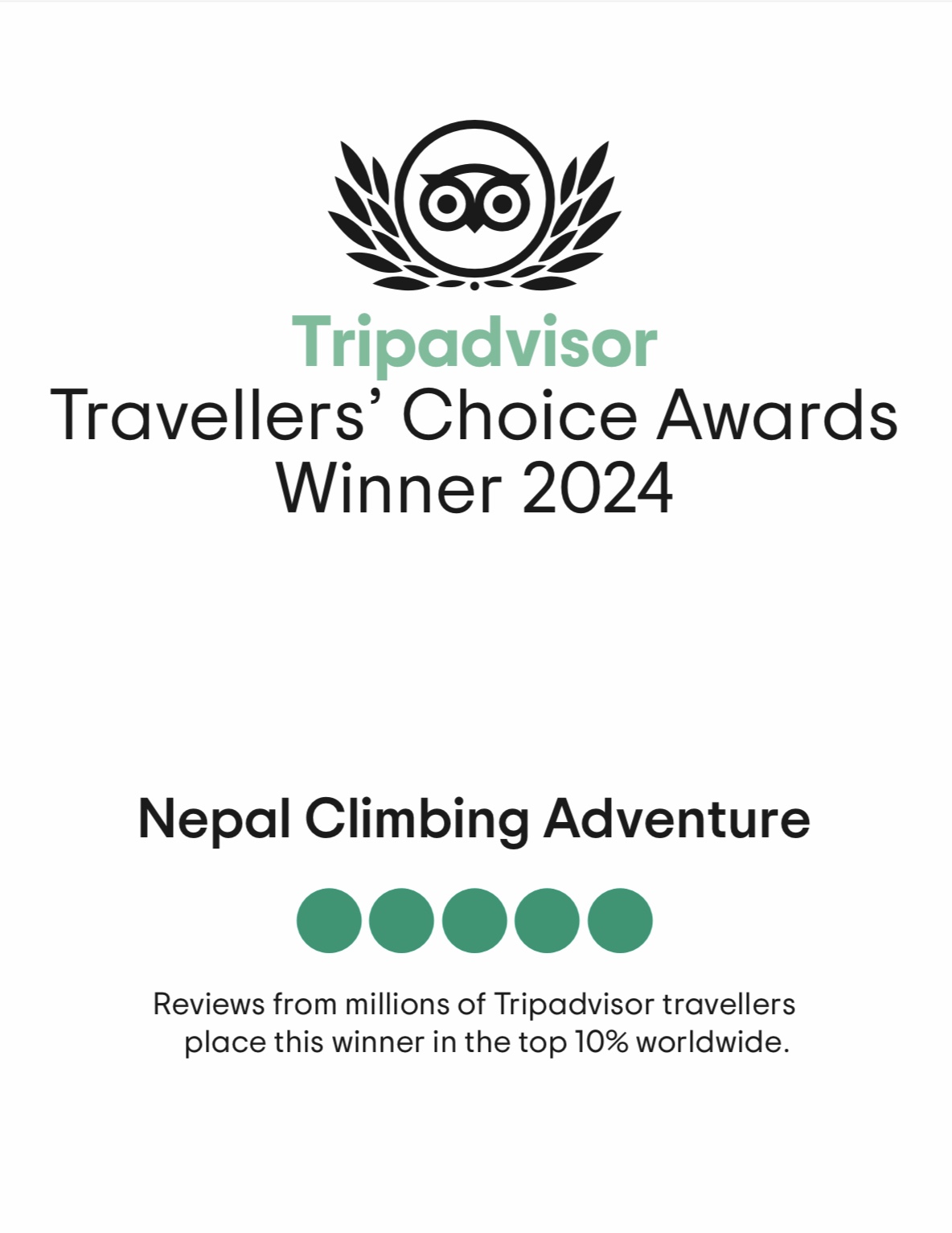
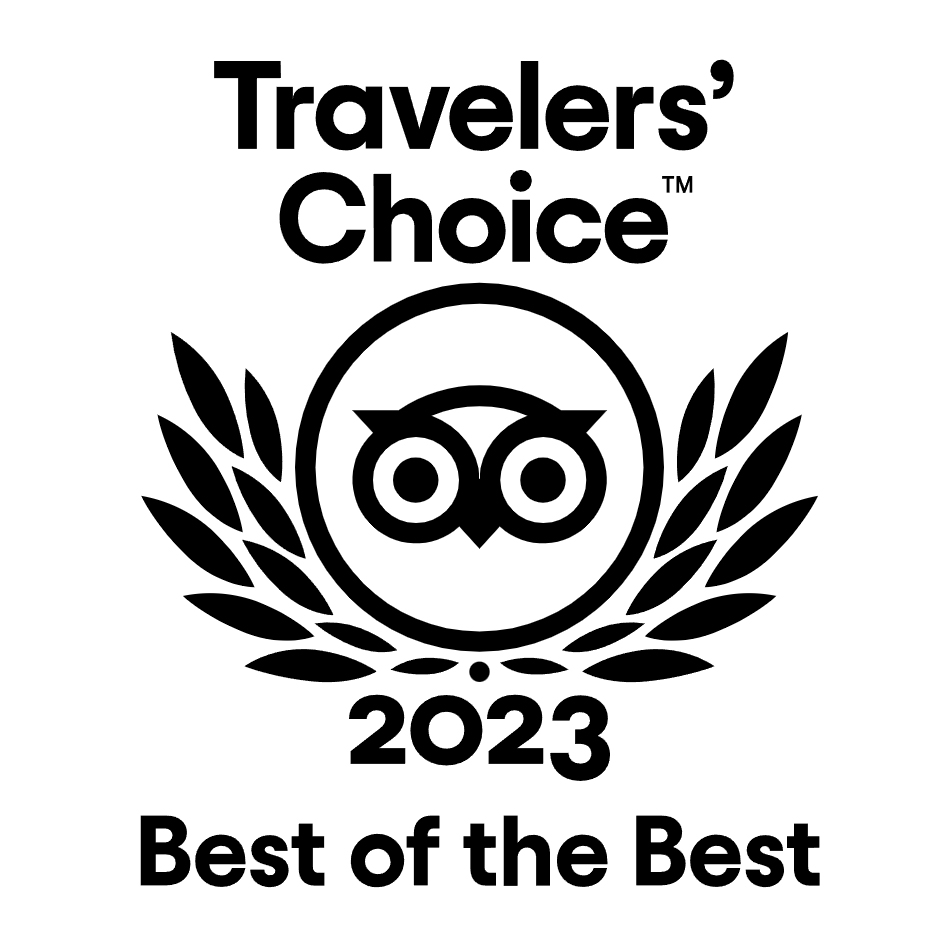















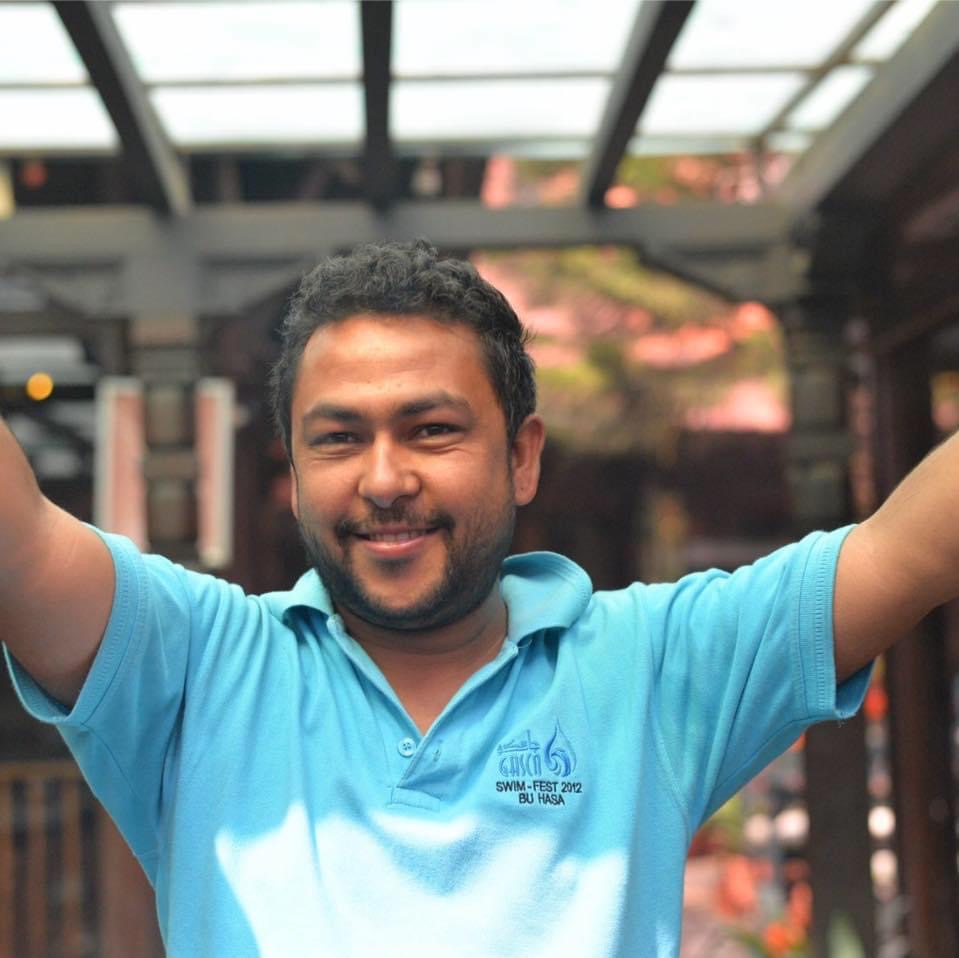 Chris Chhetri
Chris Chhetri